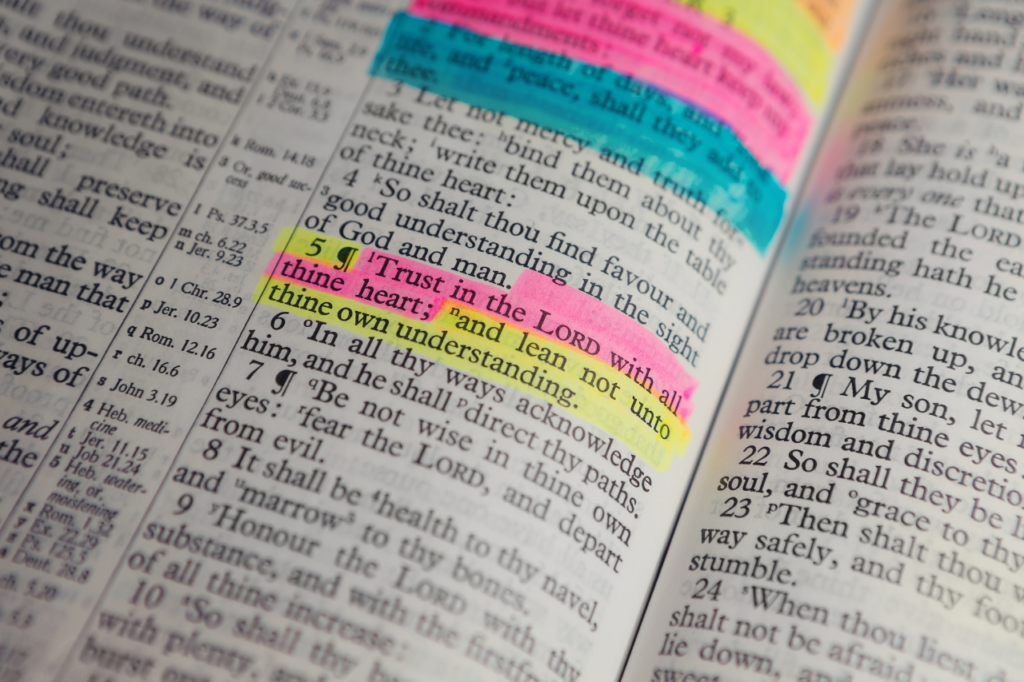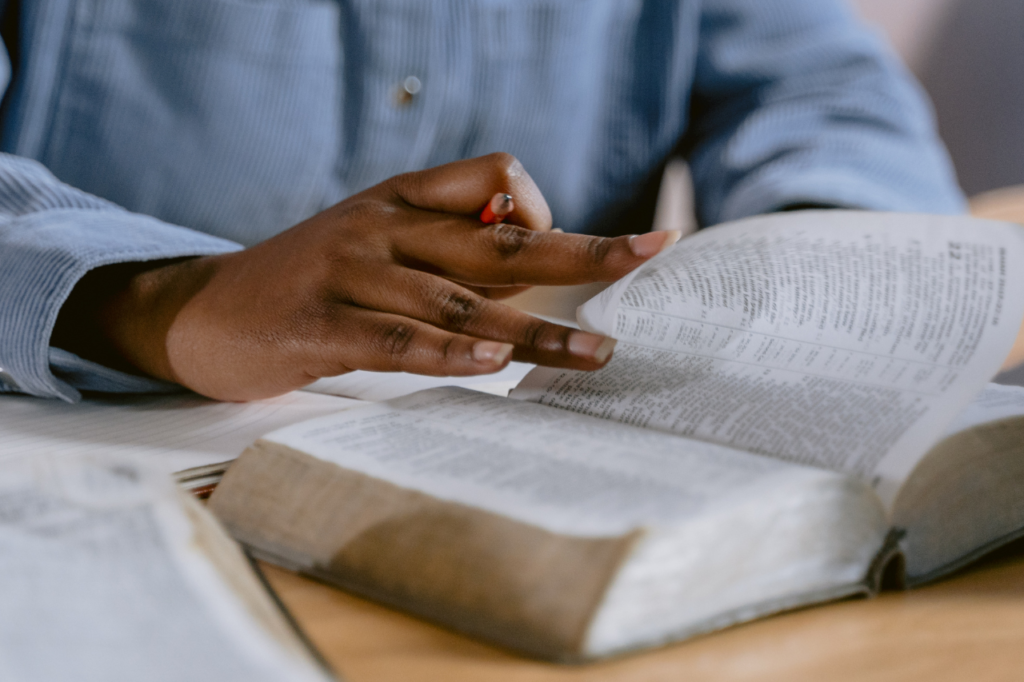Let’s be honest: the Bible can feel overwhelming.
With 66 books, countless chapters, and stories that span thousands of years, where do you even begin?
It’s not like someone hands you a step-by-step guide on what to read first. So, you start at Genesis, right? That seems logical; until you hit Leviticus, and suddenly your motivation takes a nosedive.
You pause, get confused, and maybe even give up.
So what is the best order to read the Bible?
It’s a question that can leave you feeling a bit… sad, honestly.
Sad because you want to connect with this sacred text, you want to understand God’s word, but the sheer volume and complexity can feel like an insurmountable wall sometimes.
It’s frustrating. It’s discouraging. It’s enough to make you just give up altogether.
But before you do, let’s talk about it. Let’s talk about how you can approach this incredible book, and hopefully, make that daunting task a little less overwhelming.
Table of Contents
ToggleThe Best Order to Read the Bible for Beginners

Starting anything new can be intimidating, and reading the Bible is no exception.
You might be eager to dive in, but you don’t want to get lost in genealogies or ancient laws right out of the gate.
That’s why, as a beginner, it’s important to focus on the heart of the Bible—the story of Jesus.
A great place to start is the Gospel of John. It’s simple yet profound, and it paints a beautiful picture of who Jesus is and why He matters.
From there, move to the other Gospels (Matthew, Mark, and Luke) to see the full story unfold.
Once you’ve grounded yourself in Jesus’ life, you can explore Acts to see how His message spread, followed by some of Paul’s letters (like Romans and Ephesians) to understand the “why” behind your faith.
Don’t worry about reading in a straight line; this is about building a relationship, not checking off a to-do list.
Does That Mean Beginners Should Avoid the Old Testament?
Absolutely not; the Old Testament is crucial for understanding the full picture of God’s story.
However, if you are looking for the best order to read the Bible for the first time, it’s helpful to begin with the New Testament then ease into the Old Testament.
Starting with the New Testament, particularly the life of Jesus, helps you grasp the foundation of the Christian faith before diving into the often complex and historical layers of the Old Testament.
The Old Testament reveals God’s character, His covenant with humanity, and His faithfulness through history.
Once you feel more confident in your understanding of Jesus and the early church, the Old Testament will come alive in a deeper way.
Stories like creation in Genesis, the exodus, and the prophets make more sense when seen in light of the promises fulfilled in Christ.
So after the Gospels and Acts, consider reading Genesis and Exodus to understand creation and God’s covenant with His people.
Psalms and Proverbs are also great for prayer and wisdom. When you feel ready, dive deeper into books like Isaiah or Ruth, where the richness of God’s plan starts to shine through.
The Best Order to Read the Bible for Better Understanding
Okay, maybe you’re not a complete beginner. You’ve dabbled, you’ve read some verses here and there, but you feel like you’re missing the bigger picture.
To truly understand the Bible, reading it in a way that follows the timeline of events can make all the difference.
Start with Genesis and Exodus to understand the beginning of creation and God’s covenant with His people.
Then, skip to Joshua, Judges, and Ruth to see the story of Israel unfold.
Follow that up with 1 & 2 Samuel and 1 & 2 Kings for the era of kings and prophets.
Pair these with Psalms and Proverbs for wisdom and worship, and then dive into the prophets (Isaiah, Jeremiah, etc.) to see God’s heart during times of rebellion.
End with the New Testament: start with Luke and Acts to follow Jesus’ life and the early church, then move into Romans and the other epistles to understand the deeper teachings of faith.
Revelation is last for a reason; it ties it all together and gives hope for the future.
The Best Order to Read the Bible in a Year

If you’re committed to reading the entire Bible in a year, first of all, hats off to you; it’s a huge undertaking!
But let’s be real: the “read straight through from Genesis to Revelation” plan isn’t always practical. You might make it to Numbers before burnout hits.
Instead, try a balanced plan that mixes Old Testament, New Testament, Psalms, and Proverbs each day.
For example, start with Genesis, Matthew, Psalms, and a few verses from Proverbs each day.
This way, you’ll see how the Old Testament promises align with the New Testament’s fulfillment, while also gaining encouragement and wisdom for your daily life.
If a daily reading plan feels like too much, don’t sweat it. Focus on consistency over perfection. Even if it takes you 18 months instead of 12, the goal isn’t speed; it’s growth.
If you need some guidance, here are some incredible Bible reading plans that can help you complete the entire Bible in a year:
- One-Year Bible Reading Plan
- The Bible in a Year: A Guided Bible Study Reading Plan
- The Bible Recap: One-Year Reading Guide
- The Bible in a Year – Bible Study Book for Women
- The Bible in 52 Weeks – for Women
The Best Order to Read the Bible – Catholic
As a Catholic, reading the Bible is about immersing yourself in God’s Word within the framework of tradition and the teachings of the Church.
If you’ve ever wondered “What is the best order to read the Bible?” from a Catholic perspective, the answer is one that aligns Scripture with the Church’s liturgical calendar and its rich history.
It’s also important to note that the Catholic Bible contains additional books, known as the Deuterocanonical books, which are not found in Protestant Bibles.
These books, like Tobit, Judith, Wisdom, Sirach, Baruch, and 1 & 2 Maccabees, are rich with spiritual insights and historical context, but their inclusion can feel overwhelming if you’re not sure where to begin.
Start with the Gospels (Matthew, Mark, Luke, and John) to focus on the life of Jesus.
Then move to Acts and the epistles, where you’ll see the early Church in action.
From there, read Genesis, Exodus, and Isaiah to connect the Old Testament promises to their fulfillment in Christ.
As you progress, incorporate the Deuterocanonical books to gain a fuller understanding of God’s Word.
For instance, Wisdom and Sirach are excellent for reflection and practical guidance, while Tobit and Judith offer inspiring stories of faith and courage.
Many Catholic Bible-reading plans also incorporate readings from the daily Mass, which ties Scripture to the Church’s teachings and seasons.
What is the Best Bible to Read for the First Time?
For your first read, we would strongly recommend the New International Version (NIV) or the New Living Translation (NLT).
Here’s why:
The NIV hits that sweet spot – it’s accurate to the original texts but doesn’t make you feel like you’re reading Shakespeare.
It’s like talking to that friend who’s really smart but doesn’t make you feel dumb. The language flows naturally, and you won’t get stuck on every other word trying to figure out what it means.
Below are some of the best NIV Bibles and Study Bibles to get you started:
- The NIV, Open Bible
- NIV, Holy Bible, Soft Touch Edition
- NIV, Journal the Word Bible
- NIV, Value Thinline Bible
- NIV, Personal Size Bible
- NIV, Thinline Bible
- NIV, Chronological Study Bible
The NLT takes it one step further in terms of readability. If the NIV is like talking to a smart friend, the NLT is like having that friend explain things in even simpler terms.
It prioritizes meaning over word-for-word translation, which can be incredibly helpful when you’re just starting out.
Our top picks for the best NLT Bibles and Study Bibles include:
- Holy Bible: New Living Translation
- The One Year Chronological Bible NLT
- NLT Large Print Premium Value Thinline Bible
- The Spiritual Growth Study Bible
- Every Man’s Bible
Stay away from the King James Version (KJV) for now. Yes, it’s beautiful and poetic, and maybe your grandmother swears by it, but starting with “thee” and “thou” is like learning to swim in the deep end – you might just end up frustrated and give up.
One more thing; get a Bible you’ll actually want to read. If tiny print gives you a headache, spend a little extra on one with larger text.
If you’re going to be carrying it around, make sure it’s not so heavy that you’ll leave it at home. The best Bible is the one you’ll actually open.
Related Posts
Conclusion
Finding the best order to read the Bible can feel overwhelming, but remember, there’s no one-size-fits-all approach.
Whether you’re a beginner, seeking deeper understanding, or aiming to finish the Bible in a year, the key is to start somewhere and stay consistent.
The Bible isn’t just a book; it’s a journey, a conversation with God, and a guide for life. Take it one step at a time, reflect on what you read, and let the Holy Spirit guide you.

